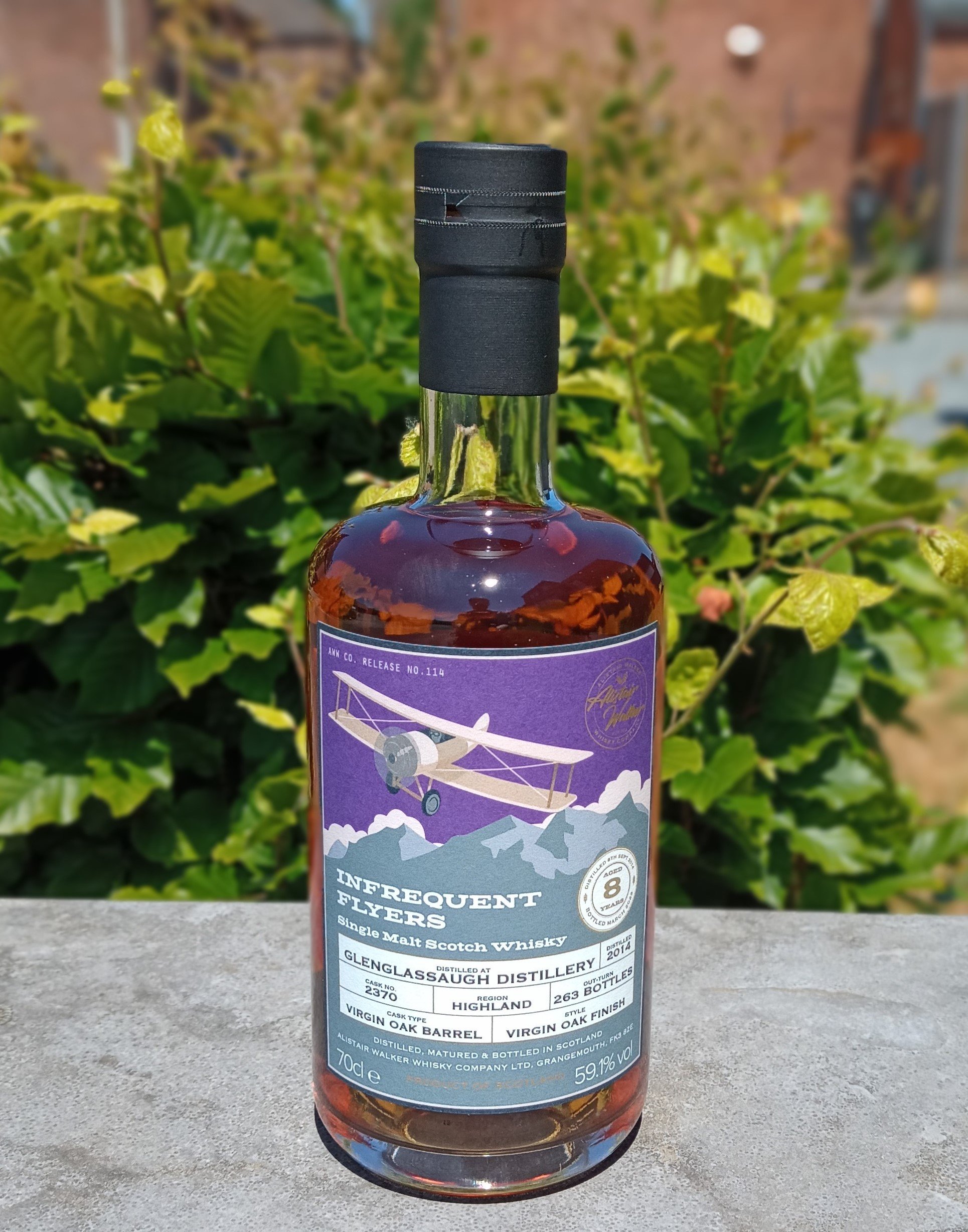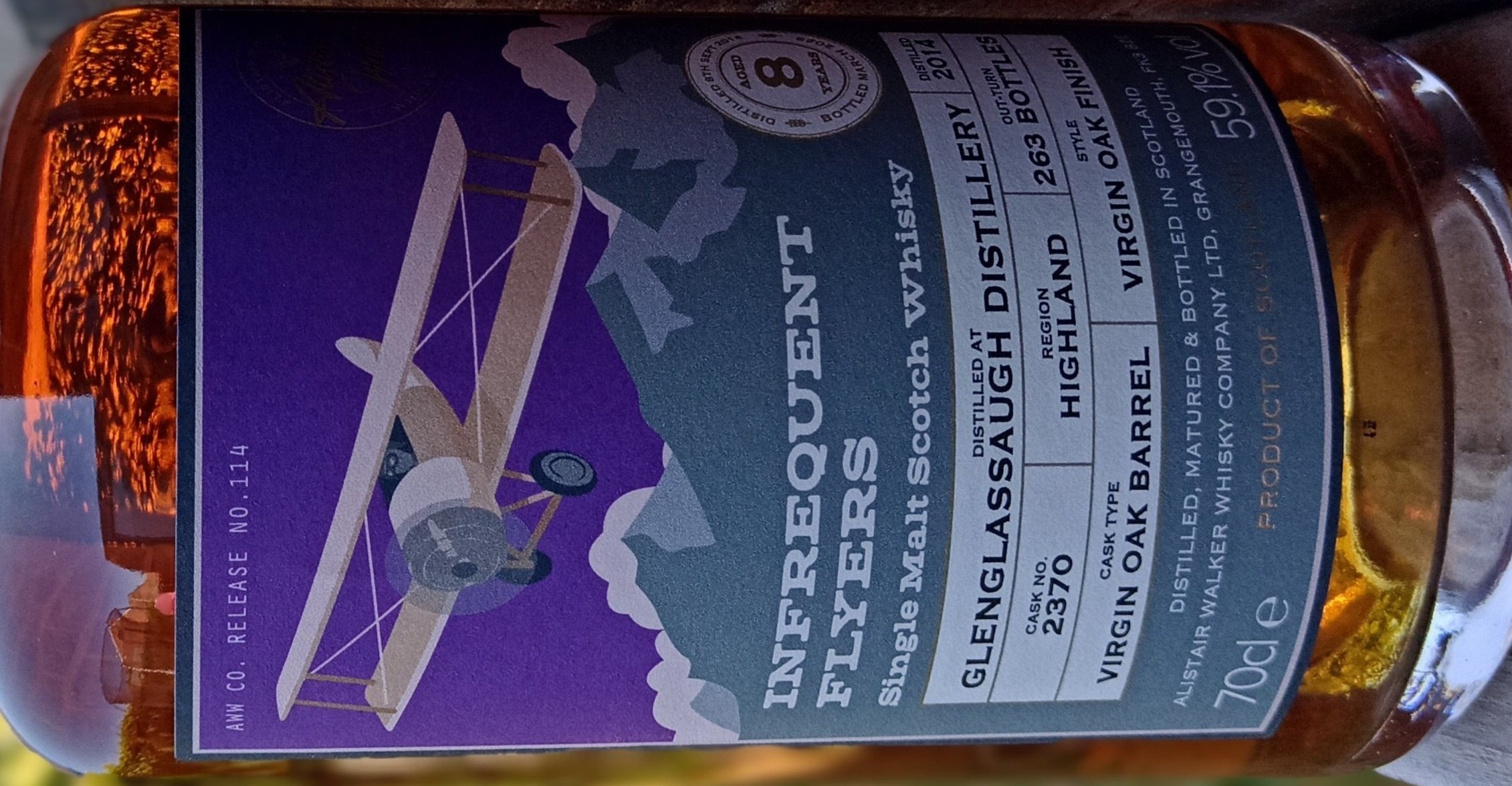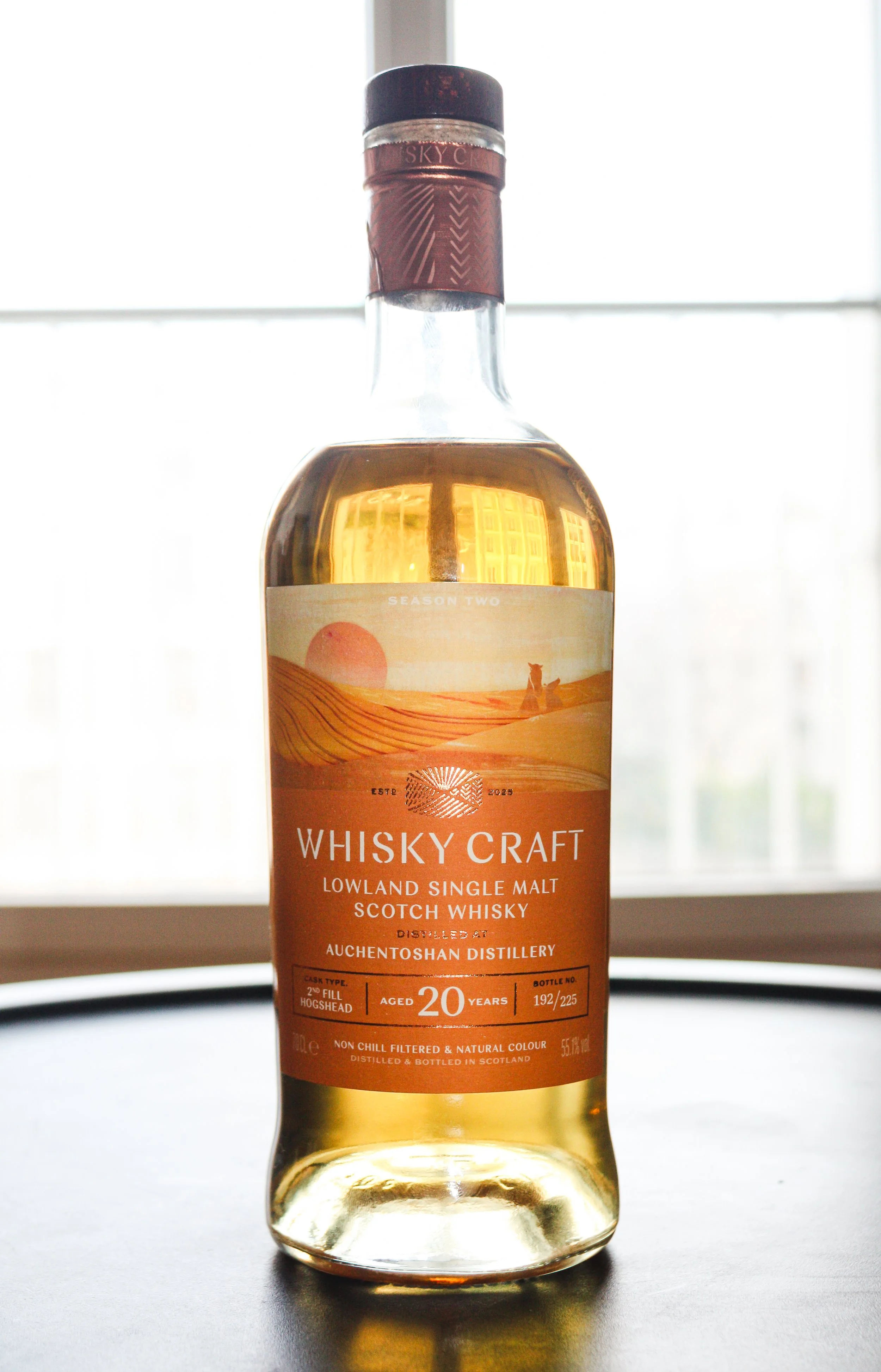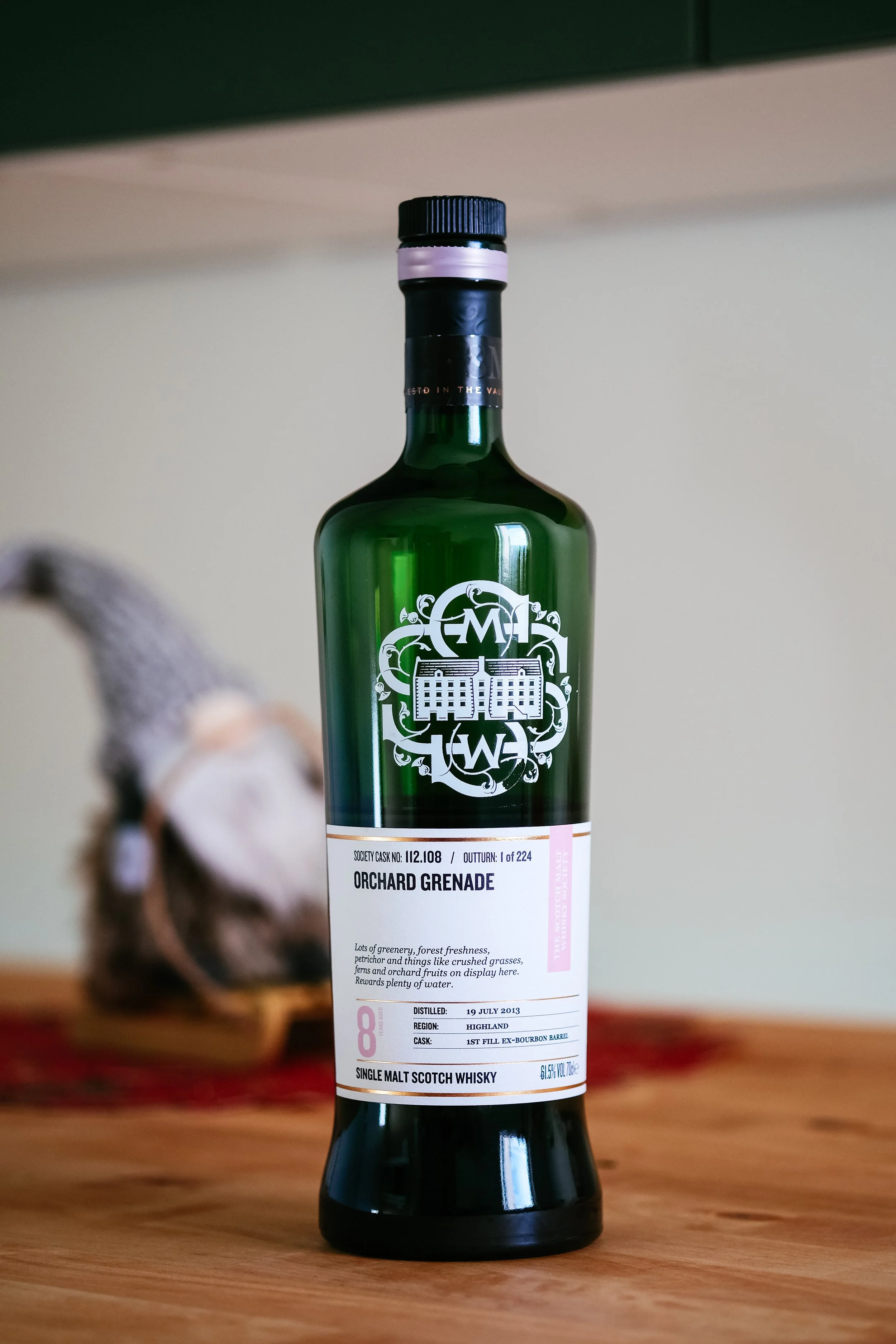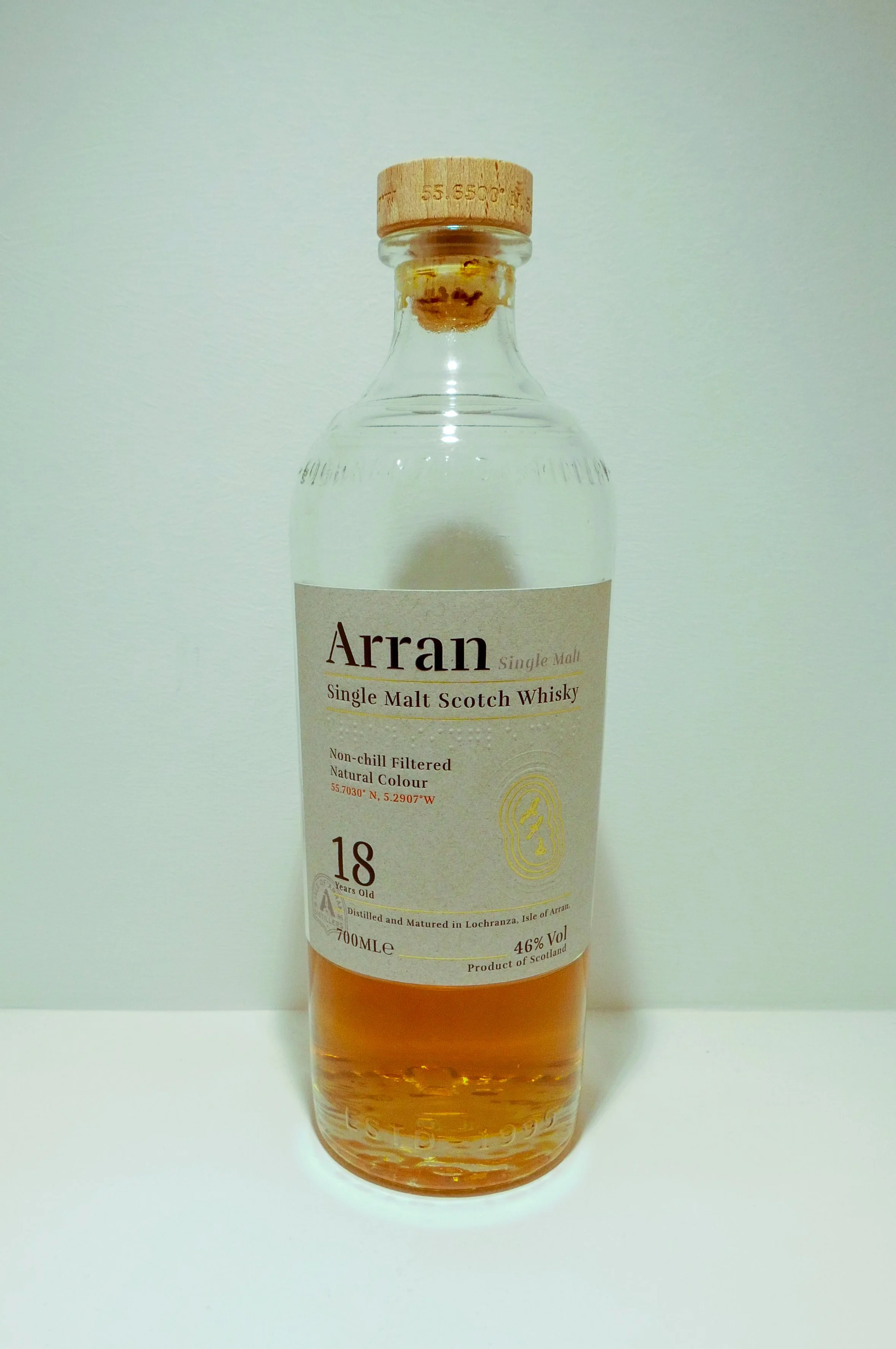Glenglassaugh 8yo
Infrequent Flyers | 59.1% ABV
Score: 8/10
Something special.
TL;DR
It’s (not) all about the wood
We need to talk about branding.
Isn’t it a pity that in 2023 we still need to rely on independent bottlers to bring us whisky in its most natural presentation?
I’m well aware this isn’t the most nuanced of statements as there are plenty of distilleries and companies releasing official expressions of their whisky with a fully natural presentation. Although I do feel there’s an understanding that natural presentation (i.e. non chill-filtered, natural colour and released at 46% ABV minimum) is a no-brainer to pretty much most of the new wave of 21st century distilleries.
Whereas some, not to say most of the long-established brands, companies and concerns are a bit all over the place. Take a look at any of the big players in the whisky industry - Diageo, Pernod Ricard, Grant’s, Dewar’s, Edrington, Brown-Forman and you’ll notice that, best case scenario, some of their products will come with a natural presentation, although for the bulk of what they release it seems we need to count our blessings if they manage to tick even one of the boxes.
For whatever reason, these age-old, built-in preconceptions about what whisky should look like, still stand tall. Yes, we can complain about these things but these decisions are based on business models which are the result of marketing research where it ‘clearly’ shows that their intended targets are happy with a lower ABV product and a golden-brown colour that doesn’t go cloudy with ice. It’s tradition and tradition is stubborn - especially when tradition equals additional profit.
So whenever a whisky is released that doesn’t arrive naturally presented, many of us see it as an opportunity gone begging. While that’s our pet peeve, it doesn’t matter to whoever decided a certain brand is best presented at 40% ABV, coloured within an inch of its life and chill filtered.
So tell me: Should it come as a total surprise when the presentation of those whiskies feels like adding insult to injury? Should we really still be shocked or appalled by the excessive presentation and/or meaningless marketing flannel that comes with it? Yes, and maybe also no.
No, because it’s more or less a logical consequence of the whole thing, but also yes. This is 2023. Get with the program, move with the times, and sell your product by giving customers meaningful, on-point, factual information, rather than writing something utterly meaningless on the back label of the box.
Brown-Forman managed to do what Billy Walker never got round to; establishing a core range of three official, readily available expressions, consisting of two non-age stated releases and a 12 year old. Ovation in the stands, and rightfully so. There should be jubilation in the streets, as finally, after years of occasional, limited (and let’s be honest about it; luck-of-the-draw in terms of quality) releases, we now have access to a core range worthy of the name.
Kudos to whoever was responsible for the new Glenglassaugh bottle design, for they are stylish and aesthetically pleasing. But it seems even at the best of times, we can’t ask for more than one or two ticks out of three in terms of integrity presentation. The 12yo comes at 45% ABV, the other two, Sandend and Portsoy, at respectively 50.5% and 49.1% ABV. Yet neither of these three choose to disclose any information about the use or absence of added colour or chill-filtration.
What’s worse is that what’s written on the box reads like the result of something created by ChatGPT where you throw in words like ‘whisky’ and ‘coastal’ and let A.I. run its course. They could’ve sold it as a renaissance story, as essentially Glenglassaugh is a 19th Century distillery that’s made a new start in the 21st Century. They could‘ve sold it with factual information about the production process or how they rely on different casks to create the flavour profile. They pretty much had carte blanche to brand Glenglassaugh any way they deemed fit, and yet, what they came up with was a story about beaches and, I kid you not, dolphins.
Even a non-concerning customer would raise an eyebrow when reading such utter nonsense. I understand that, as is not uncommon with luxury products, you’re selling not just a product, but a lifestyle as well, so a bit of romanticising or exaggeration is always lurking around the corner. Trying to sell a bottle of whisky by associating it with dolphins, however, is the biggest load of marketing nonsense since Macallan playing the ‘environmentally responsibility card’ while teaming up with Bentley - the type of language used by those who claim to be car-pooling when in fact they’re being driven around by a chauffeur.
You’d think that after the clumsy way of handling the removal of the ‘non chill filtered’ statement from bottles of Glendronach 12yo, the concept of taking your customers seriously would have taken root at Brown-Forman’s marketing department, but reading the box of the newly-released Glenglasssaugh suggests otherwise. It’s almost as if they’re making it a contest to see how far they can push things before being called out for it. And I’m not discarding the whisky as such, as first impressions suggest it’s actually pretty good stuff, but what frustrates is how any company in this day and age still dares to insult its customers with such verbal diarrhoea.
Review
Infrequent Flyers Glenglassaugh 8yo, Virgin oak finish, Alistair Walker Company, Release #114 (8.9.2014 – 9.3.2023), cask number 2370, 263 bottles, 59.1% ABV
£63 and still available (£56 paid)
So restoration of faith once again comes from an indie bottler in the form of a company somewhat ironically owned and run by Alistair Walker, the son of the former boss of Glenglassaugh.
No gibberish, no marketing drivel, no story that seems to have sprung from the mind of a 15 year old summer intern, but basically all the factual information you could hope for is on the front label and the history of the business on the back.
I know finishes in virgin oak can split the crowd, so this might be a divisive whisky. Just one look at the colour and I’m expecting quite a bit of cask impact. Will there still be enough of the spirit character left or are we dealing with one of those scotch versions of bourbon? In any case, bold move, Mr Walker.
Score: 8/10
Something special.
TL;DR
It’s (not) all about the wood
Nose
Very buttery straight off the bat with melted and caramelised butter. Some tannins (virgin oak all right), and lots of berries and blackcurrant. Quite syrupy too with notes of apple and pear, suggesting a lot of density. Vanilla and sweet black liquorice, leading into tropical wood and wood spice with cola cubes on the back of it. With a drop of water the spice and wood notes claim centre stage next to the caramelised butter. In short: this is rich, vibrant, full and oily.
Palate
Big, hefty arrival, with a lot of wood and wood spice, making for a bittersweet note. As that’s pretty much all I’m getting, let’s see if we can open it up a bit with water added.
Oh, yes! Again, the caramel and caramelised butter returns, and it’s brought along some friends. There’s a lovely salinity and dark berry notes now, and the mouthfeel is just a feast of viscosity from back to front and from start to finish. A finish that goes on for quite a bit, with a gentle bitter – woody note becoming increasingly drying.
The Dregs
As said: this will likely be a divisive whisky. The virgin oak will not please everybody, but if you can dig past the wood and the tannins, this is so rewarding and decadently luscious. Particularly that extravagant buttery note sitting on a gentle salinity is what does it for me. I simply adore this stuff. If anything, this is not your playing-it-safe, clean-cut, ticking-all–of- the-usual-boxes kind of whisky. This is out there, making a statement.
You wouldn’t and couldn’t pull this off with every malt and the fact that, despite that virgin oak cask-finish influence, there’s still plenty happening that’s down to the spirit. It raises my hopes in no small matter when it comes to Glenglassaugh, be it from indie or official releases at that. James, bring out the Bentley, we’re off to see some dolphins.
Score: 8/10
Tried this? Share your thoughts in the comments below. EA
-
Dramface is free.
Its fierce independence and community-focused content is funded by that same community. We don’t do ads, sponsorships or paid-for content. If you like what we do you can support us by becoming a Dramface member for the price of a magazine.
However, if you’ve found a particular article valuable, you also have the option to make a direct donation to the writer, here: buy me a dram - you’d make their day. Thank you.
For more on Dramface and our funding read our about page here.

